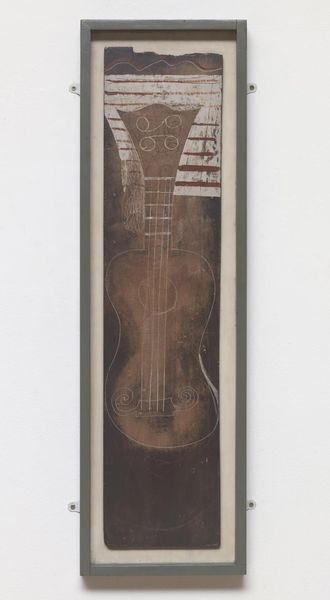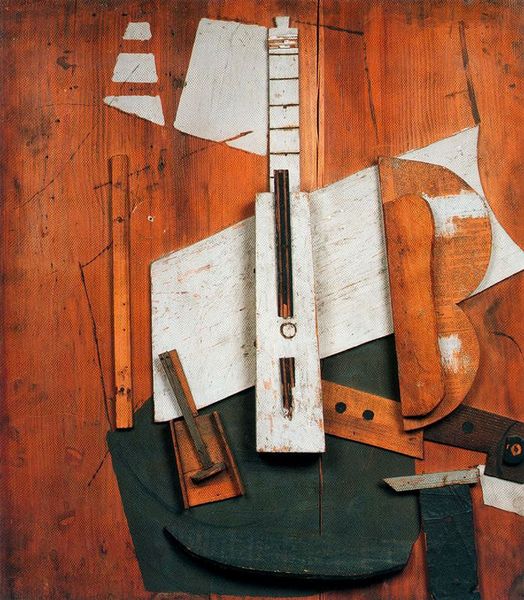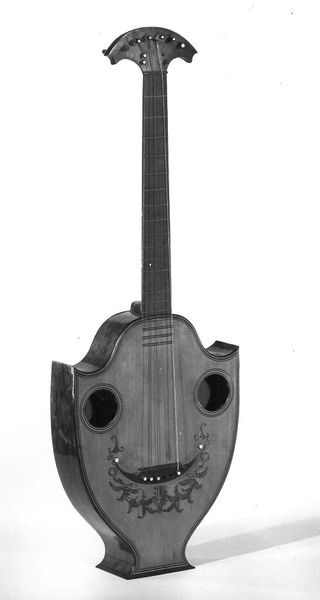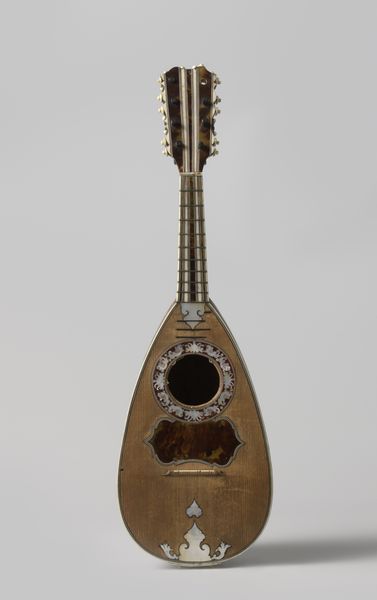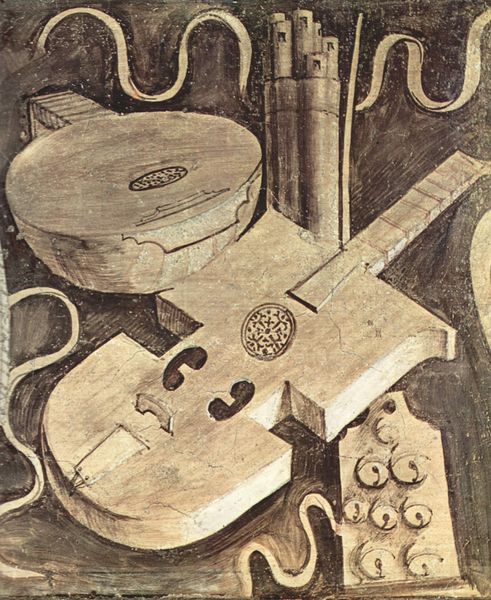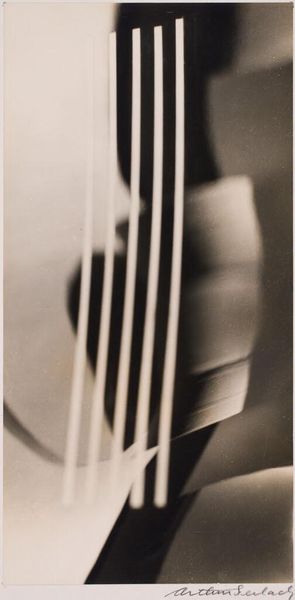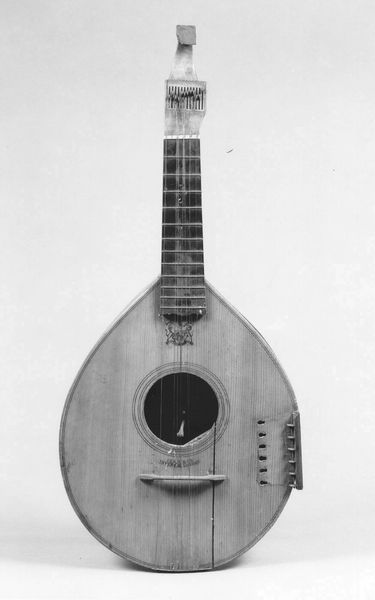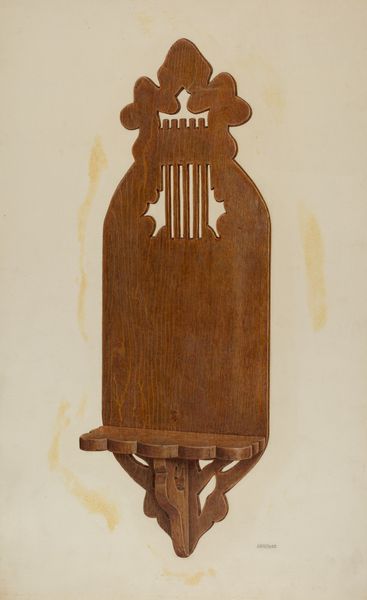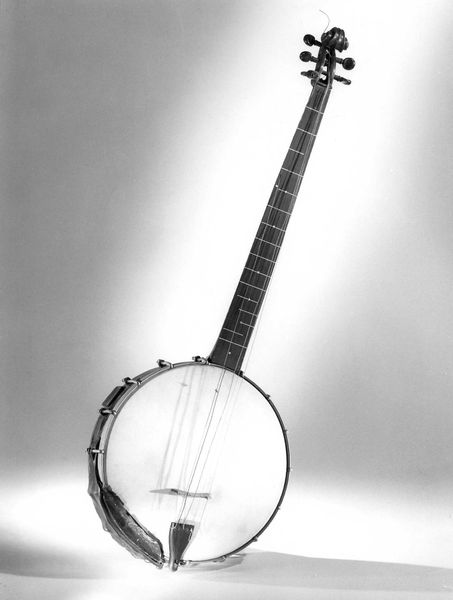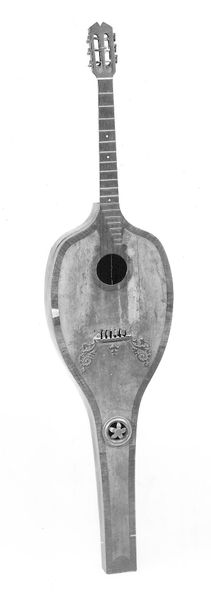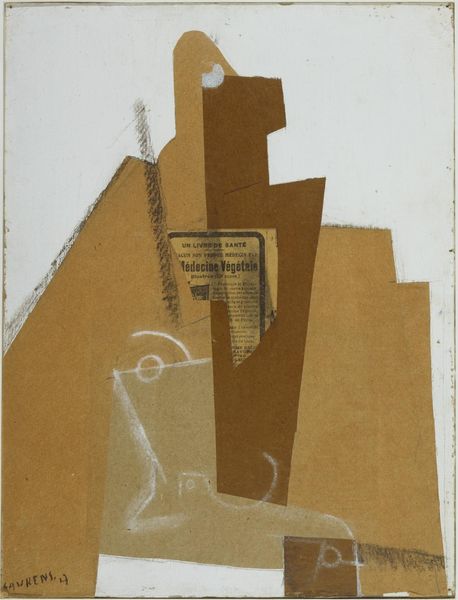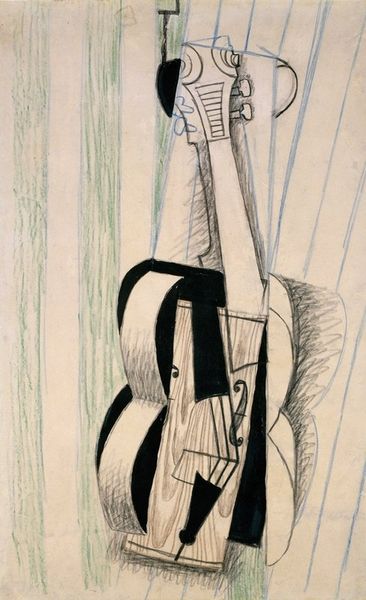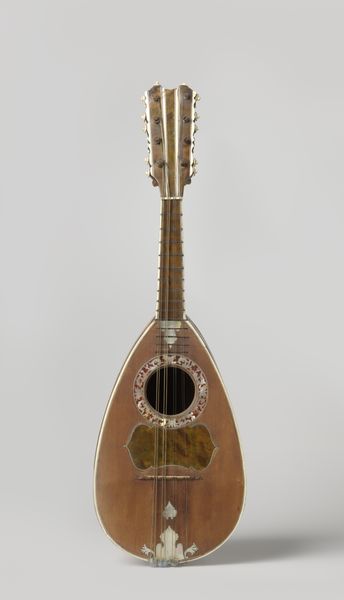
mixed-media, sculpture, wood
#
cubism
#
mixed-media
#
geometric
#
sculpture
#
ceramic
#
architecture model
#
abstraction
#
wood
Dimensions: 77.5 x 35 cm
Copyright: Public domain US
Pablo Picasso crafted this Guitar from cardboard, string, and wire, forever changing the landscape of sculpture. Created during the height of Analytic Cubism in Paris, this work challenged conventional notions of form and representation. Instead of carving or modeling, Picasso constructed this piece from humble, everyday materials. The sculpture mirrors the flattened, fragmented forms of his paintings, but here, the interplay of planes and voids takes on a tangible presence. Picasso was actively questioning the role of art institutions. By elevating cardboard into a fine art medium, he was challenging the traditional hierarchy of materials and subjects sanctioned by academies and museums. Was fine art really limited to the ‘high’ arts of painting and sculpture? Or could everyday objects be made to enter these institutions? To understand this piece fully, it's necessary to investigate the cultural context of early 20th-century Paris, the rise of Cubism, and the changing attitudes towards art. The Museum of Modern Art’s archives would also be a great resource. In the end, this sculpture serves as a powerful reminder of art's potential to disrupt, question, and redefine our understanding of the world around us.
Comments
No comments
Be the first to comment and join the conversation on the ultimate creative platform.
